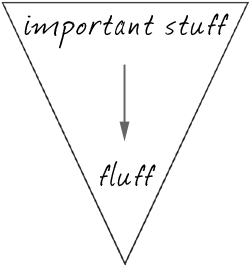I believe that this discussion deserves an airing because it informs how we think about data in general and marketing data specifically. As sports and the media that cover them evolved into professionally-managed businesses, these data grew in importance. Moreover, I think that by understanding how we depend on data as fans will help us understand how to use data more effectively as marketers.
Certainly, other writers have considered sports and media at greater length and with substantially greater talent than I plan to do. The Gray Lady has a reporter dedicated to this beat. Names such as Grantland Rice, Red Barbour, Howard Cosell, Walter Iooss and Chris Berman symbolize entire eras of sports. They and their colleagues have become almost as much a part of the game as balls, green grass and parquet floors.
However, the contributions of these men--and the relatively few women alongside of them--do not stand alone as the contributions of media to sport. I will argue that the data provided by media contributed as mightily as the words spun by their bards. Think of a sports world without box scores, on-screen graphics, Vegas odds, and out-of-town scores. Think of how your own understanding of sports has benefited from slow-motion replays, telephoto shots and injury reports. These data comprise an element of sports unavailable to the fan until the 20th century, for the most part.
I will argue first that the data made available by new media channels have changed fans’ appreciation of sports in ways more profound than the people mentioned above. More to the point, the media and their attendant data have elevated some sports above others, each in its own time. For instance, I’ll argue that telegraph and newspaper made horse racing the business that it is (or was, at any rate), that radio provided data that turned baseball into America’s true pastime and that TV, cable TV and HDTV each bore data that made football, basketball and finally ice hockey more than just men in colorful uniforms running around.
Today, we’ll begin with horse racing and in subsequent posts, we’ll cover how other individual sports owe their popularity to specific media vehicles--and their data--and how that happened. Finally, we’ll discuss what sport(s) the Internet and its multifold technologies have conspired to make pre-eminent.
First, some caveats. I make these observations as an American well-schooled in our country’s sports. For those of you who live where they don’t play baseball (may God help you) or where football involves a pitch and not a gridiron (your loss), my observations may not reflect your reality. In that case, kindly educate me with a comment or two.
Moreover, a blog post does not present the ideal setting to marshal all the relevant facts. I expect that we’ll have enough facts to support my arguments. However, I also encourage people with better facts than I to leave a comment as well.
The sport of kings
So, let’s start with the twin innovations of the telegraph and the steam-printed newspaper, which changed an ancient sport in a matter of years. I place Samuel Morse’s telegraph alongside Benjamin Day’s New York Sun because they formed an early version of a media ecosystem. As many journalism 101 students may remember, the inverted pyramid style of newswriting evolved during the U.S. Civil War.
That’s Pretty Much It
The idea of putting the most important details, such as “Pickett’s Charge Fails” at the beginning of a news story arose from the vagaries of the telegraph wires that connected war reporters to their home cities. Enemy cavalry delighted in cutting the wires, for one, and officers might commandeer the telegraph equipment for another. Thus, if reporters wanted to get at least some of the story to their readers, they started with the big details.
Mind you, this style had evolved quickly. The Sun had debuted in 1833 as the first “penny paper,” a newspaper sold mostly on the street by newsboys and heavily subsidized by advertising. Previously, newspapers had existed as subscription services often delivered by mail at rates only wealthier households could afford. Morse’s telegraph, using a single-wire system, had evolved in the 1830s as well.
So what did these twin innovations mean for the horse players?
Just before the turn of the century, the Daily Racing Form emerged. Initially published in Chicago, the DRF relied on reports wired in from all across the country and provided gamblers with a steady stream of data. Gamblers had more to go on than hearsay from grooms or a size-up of mounts in the stables. The publication leveled the playing field, if you’ll excuse the mixed metaphor (“straightened the course,” perhaps?). Gamblers now had a consistent set of data from which to make projections and use as a basis for placing bets.
DRF continued to publish even through the lean years of the early 20th century, when the powers-that-be decided to outlaw booze, horse racing (at the state level), narcotics and lots of other fun things. Horse players in the states that continued to allow racing needed the data. Today, DRF publishes in upwards of 2,000 pages of statistics in as many as 30 editions every day except Christmas.
While horse racing has ebbed in popularity as other forms of legalized gambling developed, we can still see the impact of the DRF and racing data every year on the first Saturday in May, when many people tune in to see the Kentucky Derby. Every media outlet publishes the odds of the participating horses and quotes the winner’s purse.
Would horse racing have survived without a newspaper devoted to its data? Perhaps; none but scoundrels can deny the intrinsic beauty of a thoroughbred in motion. However, good data helped turn a bucolic contest into an international business.
In our next post, we’ll begin with the 20th century and how radio influenced our appreciation of America’s pastime.

No comments:
Post a Comment